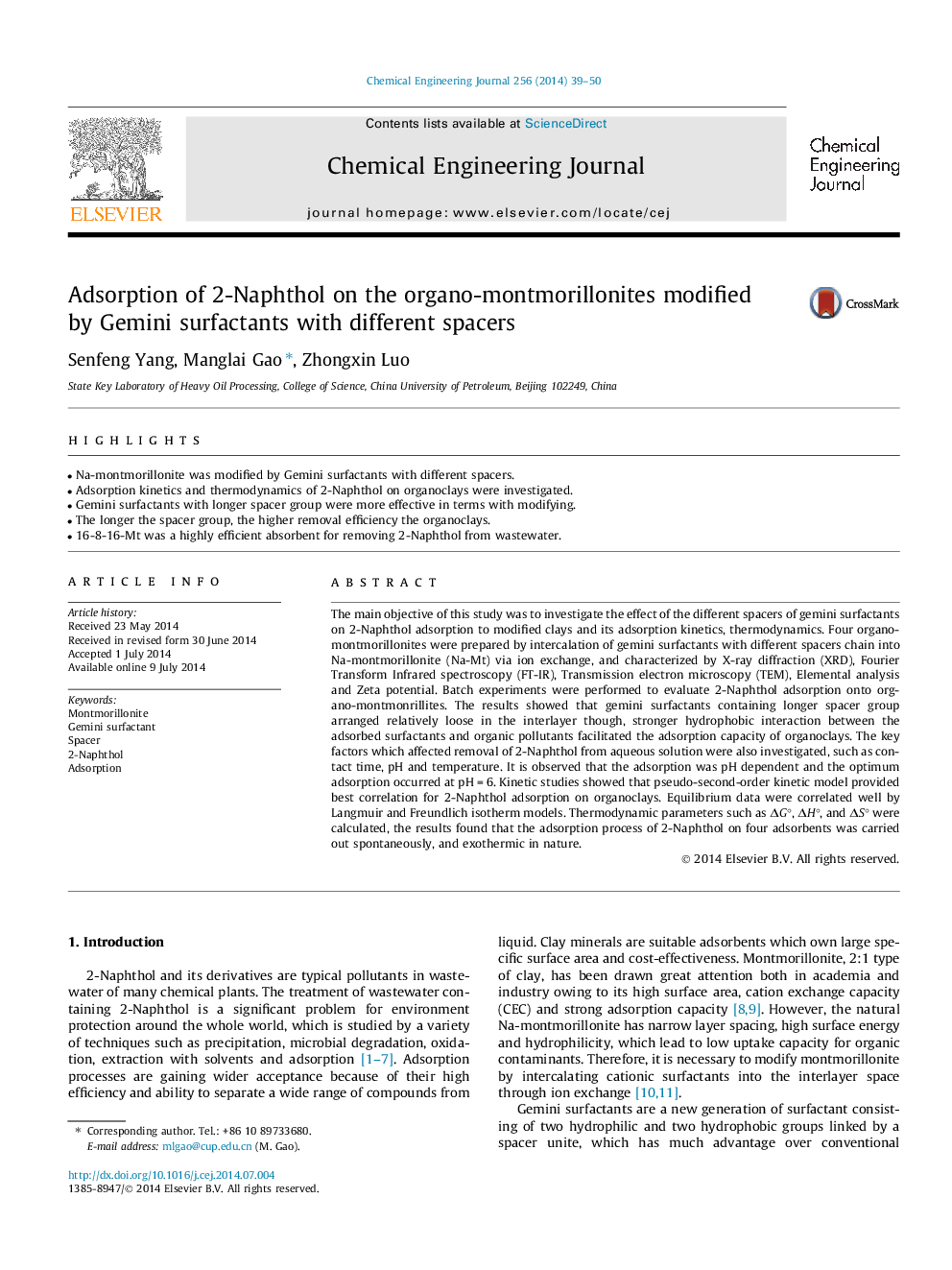| Article ID | Journal | Published Year | Pages | File Type |
|---|---|---|---|---|
| 146991 | Chemical Engineering Journal | 2014 | 12 Pages |
•Na-montmorillonite was modified by Gemini surfactants with different spacers.•Adsorption kinetics and thermodynamics of 2-Naphthol on organoclays were investigated.•Gemini surfactants with longer spacer group were more effective in terms with modifying.•The longer the spacer group, the higher removal efficiency the organoclays.•16-8-16-Mt was a highly efficient absorbent for removing 2-Naphthol from wastewater.
The main objective of this study was to investigate the effect of the different spacers of gemini surfactants on 2-Naphthol adsorption to modified clays and its adsorption kinetics, thermodynamics. Four organo-montmorillonites were prepared by intercalation of gemini surfactants with different spacers chain into Na-montmorillonite (Na-Mt) via ion exchange, and characterized by X-ray diffraction (XRD), Fourier Transform Infrared spectroscopy (FT-IR), Transmission electron microscopy (TEM), Elemental analysis and Zeta potential. Batch experiments were performed to evaluate 2-Naphthol adsorption onto organo-montmonrillites. The results showed that gemini surfactants containing longer spacer group arranged relatively loose in the interlayer though, stronger hydrophobic interaction between the adsorbed surfactants and organic pollutants facilitated the adsorption capacity of organoclays. The key factors which affected removal of 2-Naphthol from aqueous solution were also investigated, such as contact time, pH and temperature. It is observed that the adsorption was pH dependent and the optimum adsorption occurred at pH = 6. Kinetic studies showed that pseudo-second-order kinetic model provided best correlation for 2-Naphthol adsorption on organoclays. Equilibrium data were correlated well by Langmuir and Freundlich isotherm models. Thermodynamic parameters such as ΔG°, ΔH°, and ΔS° were calculated, the results found that the adsorption process of 2-Naphthol on four adsorbents was carried out spontaneously, and exothermic in nature.
